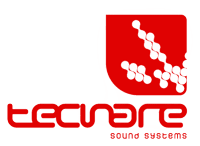Explore the World of Sound
Microphone Techniques for Different Instruments and Vocals
The correct choice and placement of microphones are fundamental aspects of professional sound capture. Proper technique allows for faithful reproduction of the sound source while minimizing issues such as proximity effect, comb filtering, phase problems, and unwanted ambient noise pickup.
In this article, we will explore microphone techniques for different instruments and vocals, covering aspects such as microphone types, polar patterns, strategic placement, and acoustic considerations in both recording studios and live sound reinforcement.
Microphone Techniques
2. Microphone Types and Polar Patterns
Before addressing specific techniques, it is essential to understand the different types of microphones and polar patterns.
2.1. Microphone Types
| Microphone Type | Characteristics | Common Applications |
|---|---|---|
| Dynamic | Rugged, lower sensitivity, limited frequency response | Kick drum, snare drum, electric guitars, live vocals |
| Condenser | Higher sensitivity and dynamic range, extended frequency response | Vocals, pianos, strings, drum overheads |
| Ribbon | Warm sound, smooth frequency response, bidirectional | Electric guitars, strings, vintage-style overheads |
| PZM / Boundary | Mounted on surfaces, wide and natural pickup | Pianos, drums, theater stages |
2.2. Polar Patterns and Their Applications
| Polar Pattern | Characteristics | Applications |
| Cardioid | Rear rejection, front sensitivity | Vocals, solo instruments, live reinforcement |
| Supercardioid | Narrower pickup angle than cardioid | Drums, guitar amplifiers |
| Hypercardioid | Even more directional, greater side rejection | Instruments in noisy environments |
| Bidirectional (Figure-8) | Captures front and rear sound, side rejection | Acoustic guitars, vocals in MS configuration |
| Omnidirectional | Captures sound from all directions | Choirs, ambient recordings, room capture |
3. Microphone Techniques by Instrument
3.1. Vocals
The choice of a vocal microphone depends on the type of voice and context (recording or live sound reinforcement).
Recommended Microphones:
-
Studio: Large-diaphragm condensers (Neumann U87, AKG C414, Shure KSM44).
-
Live: High-quality dynamics (Shure SM58, Sennheiser e935, Telefunken M80).
Positioning:
-
Distance: 10–20 cm for a clear sound with presence.
-
Angle: Slightly tilted to reduce plosives and proximity effect.
-
Use a pop filter to minimize explosive sounds (“P” and “B”).
📌 Tip: For aggressive vocals in rock or metal genres, use a dynamic microphone with a reinforced capsule to avoid unwanted distortion.
3.2. Acoustic Guitar
Recommended Microphones:
-
Small-diaphragm condensers (Neumann KM184, AKG C451B, Shure SM81) for precise capture.
-
Stereo configuration with two microphones for greater spatiality.
Positioning Techniques:
-
12th fret: Balanced sound with high-end detail.
-
Over the soundhole: More resonance but with a risk of unwanted frequencies.
-
XY or ORTF: Stereo configuration for high-fidelity recordings.
📌 Tip: Avoid placing the microphone directly in front of the guitar’s soundhole to prevent excessive low-frequency resonance.
3.3. Electric Guitar (Amplifier)
Recommended Microphones:
-
Dynamic (Shure SM57, Sennheiser MD421, Royer R-121).
-
Ribbon microphones for more body and warmth.
Positioning Techniques:
-
Center of the speaker cone: Bright and defined sound.
-
Edge of the cone: Warmer and less aggressive sound.
-
Angled placement: A mix of brightness and body.
-
Dual-microphone technique: Combining a dynamic mic with a ribbon mic for added depth.
📌 Tip: For a better mix, record two takes with different placements and blend them in post-production.
3.4. Drums
Recommended Microphones:
-
Kick drum: AKG D112, Shure Beta 52A, Audix D6.
-
Snare drum: Shure SM57, Beyerdynamic M201.
-
Toms: Sennheiser MD421, Shure Beta 98.
-
Overheads: Neumann KM184, AKG C414.
Positioning Techniques:
-
Kick drum: Inside for attack, outside for body.
-
Snare: 45° above the drumhead, with an additional mic below for snare wire capture.
-
Overheads: XY or spaced pair technique for better stereo imaging.
📌 Tip: Adjust phase alignment between microphones to prevent frequency cancellations.
3.5. Electric Bass
Recommended Microphones:
-
Large-diaphragm dynamics (Electro-Voice RE20, AKG D112).
-
Combination with direct input (DI) for greater control in the mix.
Positioning Techniques:
-
Near the speaker cone: To capture attack and definition.
-
DI + Microphone combination: For greater flexibility in the mix.
📌 Tip: Apply a high-pass filter on the microphone signal to reduce unwanted sub-bass noise.
3.6. Piano
Recommended Microphones:
-
Small-diaphragm condensers (Neumann KM184, AKG C451B).
-
Stereo configuration for more realism.
Positioning Techniques:
-
Close to the strings: Captures detailed hammer action.
-
Spaced pair configuration: More open and natural sound.
📌 Tip: For grand pianos, experiment with different distances to achieve greater depth.
4. Conclusion
Proper microphone techniques are essential for capturing sound accurately and professionally. Each instrument and vocal type requires a specific approach to avoid phase issues, comb filtering, and unwanted noise pickup.
✔ Choose the right microphone according to the sound source. ✔ Position strategically for optimal capture. ✔ Avoid phase issues in multi-mic setups.
With these techniques, you will achieve a more faithful and professional sound capture in any recording or live sound environment. 🚀
Featured Articles
Explore Other Topics
Acoustic Science
Audio Technology
Sound Design
Music Production
Environmental Acoustics
Psychoacoustics
Audio Engineering
Sound History
Tecnare
Loudspeakers Series
E Series
IBZA Series
V Series
ALIS Series
Array Series
SW Series
KT Series
TANIT Series
CS Series
Amplifiers Series
Digital Processors
Accessories
